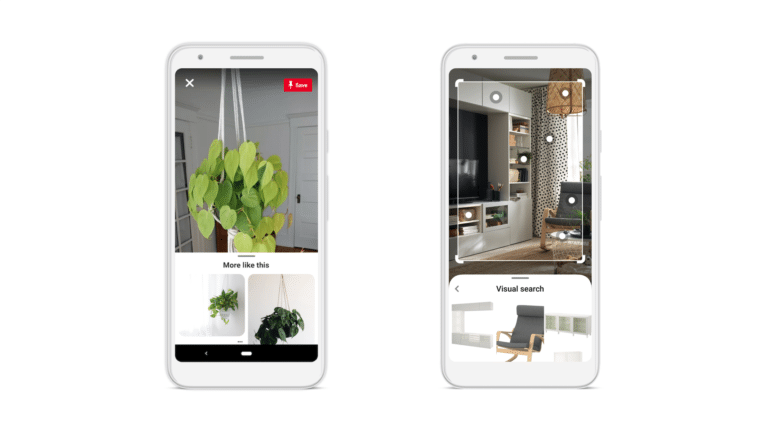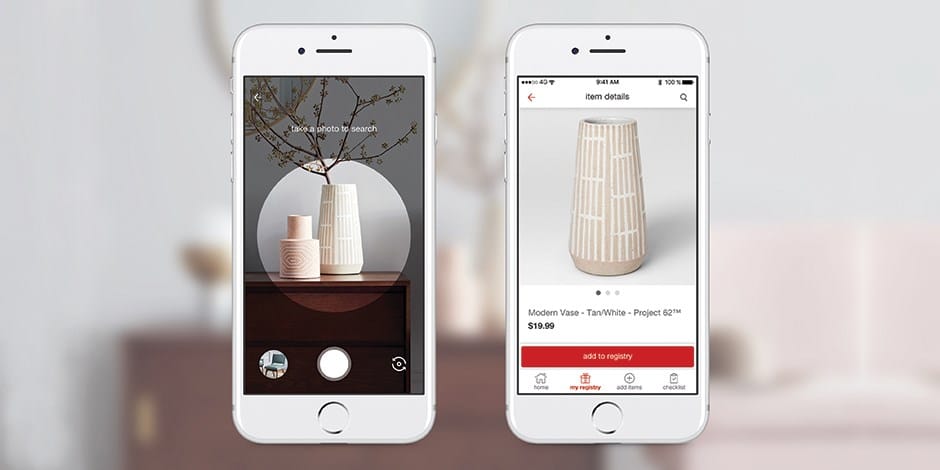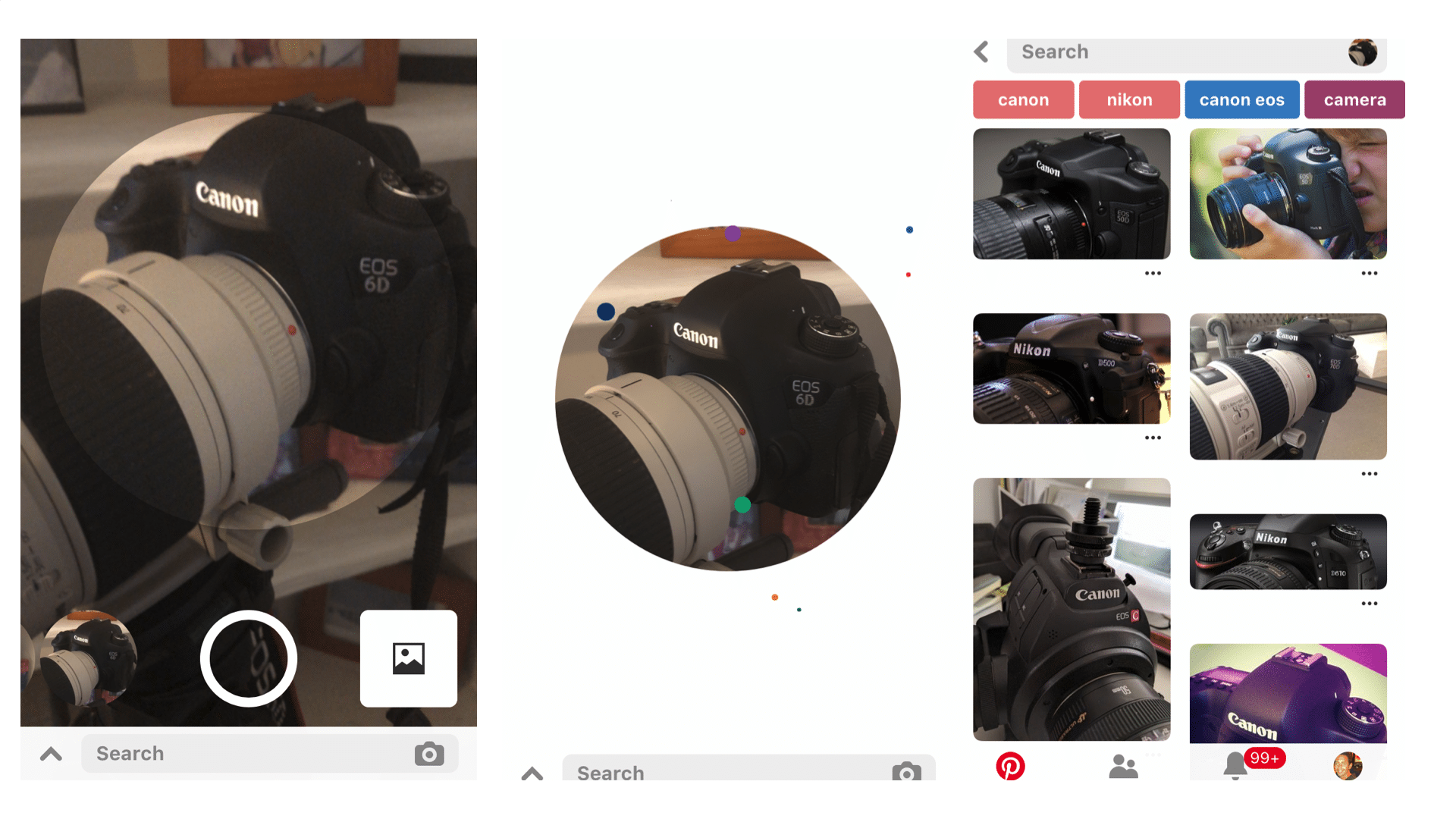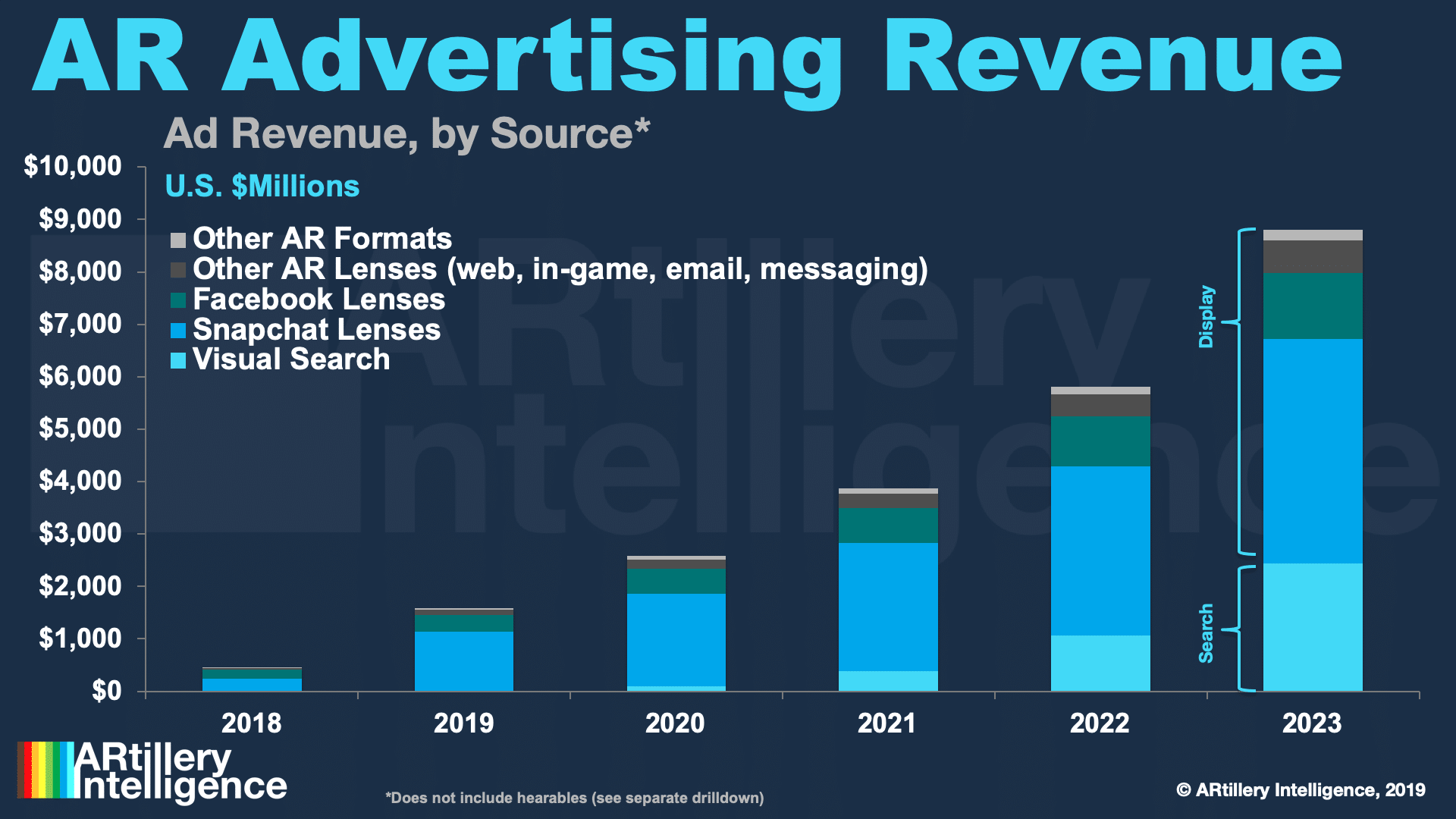
Data Point of the Week is AR Insider’s dive into the latest spatial computing figures. It includes data points, along with narrative insights and takeaways. For an indexed collection of data and reports, subscribe to ARtillery Pro.
Visual search is our top pick for AR flavor that could birth killer apps. For those unfamiliar, it’s a sort of cousin of AR that taps into computer vision and machine learning to identify items you point your phone at. To sidestep tech jargon, Google sometimes calls it “search what you see.”
Speaking of Google, it’s the front runner for visual search. It has the knowledge graph, image database for object recognition, and other underlying tech advantages that will carry over to a visual search world. More importantly, it’s highly motivated to make visual search happen.
But another player could vie for visual search market share: Pinterest. The publicly-traded media & commerce play is likewise positioned with an image database and AI chops. It has a narrower use case than Google — mostly around consumer products — but that focus aligns with monetization.
To validate this potential, it recently announced that Pinterest Lens — its visual search feature — recognizes 2.5 billion objects, mostly fashion or home-related. This notably beats Google Lens’ one billion products recognized. Though in fairness, Google announced that figure a year ago.

Commercial Intent
Beyond volume, Pinterest’s advantage goes back to the product focus. Google, being Google, will likewise monetize Google Lens’s “lean-forward” user intent to contextualize physical world items. That could be highly monetizable in fashion and local discovery. But it’s not there yet.
Instead, Google has focused its marketing for Google Lens on general interest visual searches like pets and flowers. This is to build broader organic demand by focusing on widely-familiar search subjects (a la “training wheels“). Monetization will come after user engagement hits critical mass.
But it seems Pinterest is closer to that point with a use case around product-based (monetizable) visual search. That likewise aligns with its product persona. A “search what you see” proposition for fashion items and home goods is a natural extension from everything Pinterest has built so far.
And it’s proving out in terms of user traction. Pinterest also announced that 80 percent of Pinners start with visual search when shopping vs. 58 percent of non-Pinners. This commanding share is notable because visual search hasn’t really acclimated yet as a common consumer behavior.

Knowledge Graph
Back to Google, competitive advantage could conversely lie in underlying technology to surface the best results, and it’s hard to bet against Google there. Google Lens’s object recognition is built from Google’s machine learning, knowledge graph and training set from years of indexing images.
So Google and Pinterest’s respective visual search plays will co-exist for different use cases but also compete and overlap in some ways. Others will compete, such as, Snapchat which not only has a “camera-forward” AR user base, but it smartly partnered with Amazon for visual search.
Another key competitive edge will be to make visual search easier to access. Google has taken steps to accelerate Lens by incubating it in pervasive search products. And that’s needed, as there are still too many phone taps to lauch a tool that isn’t proven enough to justify activation energy.
As these things evolve, visual search could germinate AR killer apps. It not only moves beyond fun & games to achieve true utility (what AR needs), but it’s inherently a high-frequency use case. In that way, it follows patterns of mobile search — in both usage patterns and monetization potential.

Gravitational Pull
Speaking of mobile search, one lesson is that proximity to search subjects (e.g restaurant search when near the restaurant) can boost “intent” and key metrics like CTRs and CPCs. Visual search takes that proximity to another level, given that search subjects are literally in-view.
That’s amplified when visual search is used in commercial contexts such as store aisles. Pinterest, again, has an underlying commercial context to its engagement which makes it a sleeping giant in visual search. But Google’s gravitational pull and knowledge graph are formidable.
Whether it’s Pinterest, Google, Snapchat or others, visual search and AR in general need more business cases to counteract the broader market’s growing doubt. We’ll be watching as innovation, product positioning, and user behavior coalesce into revenue-generating AR products.
For deeper XR data and intelligence, join ARtillery PRO and subscribe to the free AR Insider Weekly newsletter.
Disclosure: AR Insider has no financial stake in the companies mentioned in this post, nor received payment for its production. Disclosure and ethics policy can be seen here.
